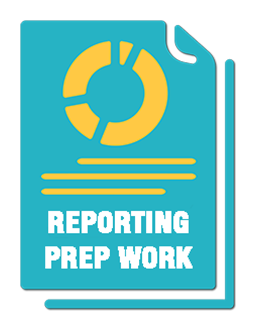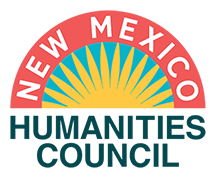Rotate your phone to view the information below.
ILLUSTRATING A TANGIBLE PROJECT BUDGET
The budget form has five main categories: 1) general supplies and communication, 2) pre-event marketing, 3) educational materials, 4) logistics, 5) and project personnel. The budget form has been updated to complement risk assessment evaluations, and the Uniform Guidance.
The written part of an application and the budget should directly reference each other. If paid newspaper ads are listed as part of the marketing plan, then the budget should show dollar amounts allocated towards this expense. Likewise the explanation section of the budget should clearly articulate the amount of funds being devoted to this form of paid advertisement. It is important that a tangible plan is able to be clearly identified.
Similarly, the budget and the application’s narrative should mirror each other when it comes to paying project personnel. Whether an applicant is seeking to pay staff or a scholar, these individuals’ names and their roles should be specified in both documents. Since subaward grants through the New Mexico Humanities Council are federal funds, specific details are requested to mirror the requirements outlined in the Uniform Guidance managed by the Office of Management and Budget.
Applicants who are selected for a subaward grant will be assigned a payment structure based on their risk assessment score. Organizations with a positive grant management history and an application that is closely aligned with grant guidelines are likely to receive a low risk assessment score and therefore be eligible to receive a larger portion of grant funds as their initial payment. Likewise, organizations with a low risk assessment score are not anticipated to require as much monitoring which reduces the interim reporting burden.
Whether an organization is developing a budget for an application or working on final financial reports, the content within both types of forms should reflect the organization’s bookkeeping. For example, when seeking funding to support for project personnel, individuals should be identified as either contractors or staff. The dollar values associated with each individual should reflect their actual rate of pay. If the use of a building is logged as in-kind cost-sharing to meet matching requirements, then the hourly rate at which a space is valued should reflect an actual rental rate for the space. For example, if the applicant is contributing the use of an auditorium for $500 a day, then the organization should have a tangible record of offering the same space to the general public at that same rate for the same block of time. This demonstrates fair market value for the space and therefore satisfies the requirements of the Uniform Guidance.
Grant funds being requested and cost-sharing contributed toward matching need to reference expenses related directly to executing the project. Subaward grants are meant to support direct project costs, rather than the indirect costs of an organization. There are only two exceptions which can be found below in the section labeled “cost-sharing / one-to-one matching requirements.”
While it is acknowledged that some project expenses are often acquired prior to a subaward grant being awarded, it is important to know that grant funds can only support expenses that fall within the grant’s active project performance period. Likewise, the expenses and in-kind items logged as cost-sharing (matching) in final reports need to also fall within the grant’s active project performance period.
Subrecipients that are filling out final financial reports need to 1) reference the approved budget, 2) reference their bookkeeping records, and 3) only report allowable expenses. The reported amounts should mirror the budget with no more than a 10% change. It is understood that circumstances might call for budget changes that exceed this 10%, and when this occurs, please reach out to NMHC’s grants management staff for prior approval.
TIMELINES AND MAPPING OUT YOUR PROJECT'S BUDGET
We encourage all applicants to review our application deadlines as well as our general processing timelines before applying for a grant. Application deadlines can be found on our “Get Started” page. The timeline associated with pre-application preparation all the way through the NMHC Board’s decision process can be found on the “Project Prep Work and What to Expect” page. The day the Board votes is when the grant project performance period begins. NMHC staff need some processing time before the initial payments can be disbursed. Being aware of these timelines will help you plan a project proposal, event programming and related expenses.
All final grant application submissions and subaward grant reports are managed through the Foundant Grants Management Portal. If you are ready to schedule a consultation meeting or have questions along the way please reach out to NMHC’s grants management team. Check out our staff directory for contact information. Below are more specifics about budgeting.
Rotate your phone to view the information below.
COST-SHARING / ONE-TO-ONE MATCHING REQUIREMENTS
Applicants must pledge to equally support the project by providing a one-to-one match through cost-sharing and third party in-kind contributions. Cash contributions from the applicant/non-federal entity would include expenses incurred in order to execute the grant funded project (examples: directly related employee wages, marketing expenses, venue rental fees, etc.).
For audit purposes, it is recommended that subrecipient organizations retain documentation to verify both cash-based and in-kind contributions. Some examples include: volunteer logs, employee payroll records, copies of checks, receipts, invoices, donation records, etc. Please retain these items for at least three years.
VOLUNTEERS CONTRIBUTING IN-KIND HOURS: Volunteers with hours contributed toward meeting the matching requirements of the grant must have their contributions to the project logged in a way that mirrors the Uniform Guidance requirements. NOTE: It is not necessary to include this level of detail for volunteers in the application’s budget. However, this information will be needed during the final reporting process. Subrecipients often minimize the administrative burden by having volunteers fill out a “volunteer log.”

- List the individual’s role.
- Provide a concise list of duties the person performed linked to directly executing the grant funded project.
- Assign an hourly rate based on the fair market value of the type of role being performed.
- List the total number of hours the person contributed to directly executing the grant-funded project.
ADDITIONAL COMMUNITY CASH BUDGET COLUMN
This column is most commonly used to log project funds coming from another federal source (see policy note below). Within the budget form is a column labeled “additional community cash.” Within this column applicants have the option to showcase the additional funds they have from other sources to support the proposed project that go beyond the one-to-one minimum matching requirements. Providing this information helps demonstrate how your organization is able to ensure the success of the project / program.
FUNDING EXCLUSIONS
NMHC policies and guidelines exclude grant funding for the following types of projects, activities and costs:
• food and beverage items beyond travel per diem;
• “brick and mortar” projects such as construction, renovation or preservation;
• museum or library acquisitions;
• fundraising events or other events intended to make a profit;
• curriculum development;
• classroom presentations or “how to” workshops without humanities discussions;
• traditional courses for college credit;
• research (except as preparation for an NMHC public grant program);
• fellowships or scholarships;
• advocacy, lobbying or direct action programs;
• professional development;
• contest awards;
• professional conference events intended solely for those registered at the conference; conference events open and accessible to the general public may be considered for funding;
• the creation of art or performing arts programs, with the exception of programs in conjunction with a humanities centered educational talk that facilitates a question and answer session with the audience;
• art exhibitions without a humanities centered discussion
• broadcast quality film or video projects, unless an integral part of another project (example: a video that is part of a humanities centered exhibit or oral history project);
• the continuation of existing humanities programs that are a regular part of an organization’s activities;
• the creation of new and entire websites;
• publications that are not directly related to executing the grant funded project; NOTE: publications funded through NMHC awards may not contain solicitations of funds.
SPECIFIC AREAS WITH CAPS WHEN USING GRANT FUNDS
- FILM OR EXHIBIT OBJECT RENTAL: $250 per film or item that is actively discussed in humanities focused scholar presentation with Q&A. (Items would be from outside of your organization's established collection.)
- LODGING: $107 per night
- PER DIEM: $59 per day
- RENTAL CAR: Up to $50 in gas can be requested. When necessary for out of town travel, funds for a rental car may be requested. Please do not exceed a median level rental.
- MILEAGE: $0.67 per mile
- SCHOLAR PRESENTATIONS: $350 per scholar, per event
- EXTERNAL EVALUATOR: $350 per event with a separate form per event
BUDGET CATEGORIES
- COMMUNICATION — TELEPHONE USE
- COMMUNICATION — VIDEO EVENT HOSTING (EXAMPLE: ZOOM)
- COMMUNICATION — TRANSLATION SERVICES (EXAMPLE: LIVE ASL INTERPRETERS, VIDEO CAPTION LANGUAGE TRANSLATION ETC.)
- SUPPLIES — POSTAGE
- SUPPLIES — PORTABLE EXHIBIT SUPPLIES (EXAMPLE: CONSTRUCTION MATERIALS FOR PORTABLE DISPLAY CASES ETC.
- SUPPLIES — EQUIPTMENT RENTAL
- SUPPLIES — FILM OR EXHIBIT OBJECT RENTAL (CAPPED ITEM) SEE POLICY NOTES BELOW
- SUPPLIES — OTHER
- PRINT BASED MARKETING (EXAMPLE: NEWSPAPER ADS, MAGAZINE ADS, ETC.)
- RADIO OR TV BASED MARKETING
- FLYER-BASED MARKETING
- DIGITAL MARKETING (ADS ON SOCIAL MEDIA, ADS WITH GOOGLE, ETC.)
- OTHER FORMS OF PRE-EVENT ADVERTISEMENT
- EXTERNAL MARKETING SERVICES (EXAMPLE: CONTRACTED GRAPHIC DESIGNERS, ADVERTISING AGENCIES, ETC.)
- IN-HOUSE MARKETING PERSONNEL
- The person's name.
- List the individual’s role.
- Provide a concise list of duties the person will perform linked to directly executing the grant funded project.
- The individual’s rate of pay expressed in an hourly rate format even if the person is salaried (NOTE: Base pay, and fringe benefits can be incorporated, but payroll taxes should be excluded.)
- The total number of hours the person will contribute to directly executing the grant-funded project.
- EDUCATIONAL BROCHURES
- EDUCATIONAL GALLERY GUIDES OR BROCHURES
- EDUCATIONAL SIGNAGE
- EDUCATIONAL SERVICES — VIDEOGRAPHER
- EDUCATIONAL MATERIALS (OTHER)
- VENUE RENTAL
- TRAVEL — PER DIEM (CAPPED ITEM)
- TRAVEL — LODGING (CAPPED ITEM)
- TRAVEL — MILEAGE (NON-RENTAL CARS) (CAPPED ITEM)
- TRAVEL — RENTAL CAR (MAY INCLUDE UP TO $50 GAS)
- TRAVEL — AIRLINE TICKETS
- TRAVEL — TRAIN OR BUS TICKETS
- CONTRACTOR — PROJECT PERSONNEL — EXTERNAL EVALUATOR
- CONTRACTOR(S) — PROJECT PERSONNEL — SCHOLAR(S)
- CONTRACTOR(S) — OTHER
- KEY PROJECT PERSONNEL — PROJECT DIRECTOR
- KEY PROJECT PERSONNEL — FISCAL AGENT
- STAFF — PROJECT PERSONNEL — OTHER
- The person's name.
- List the individual’s role.
- Provide a concise list of duties the person will perform linked to directly executing the grant funded project.
- The individual’s rate of pay expressed in an hourly rate format even if the person is salaried (NOTE: Base pay, and fringe benefits can be incorporated, but payroll taxes should be excluded.)
- The total number of hours the person will contribute to directly executing the grant-funded project.
- Provide a total dollar value based on calculating the information identified above.
- List the individual type of role that will be fulfilled.
- Provide a concise list of duties that will be performed to directly execute the grant funded project.
- Assign a fair market value rate to the type of role. Typically using the median value is recommended.
- List the total number of hours the person will contribute to directly executing the grant-funded project.
- Provide a total in-kind value based on calculating the information identified above.
